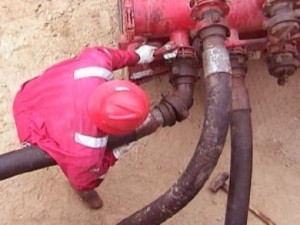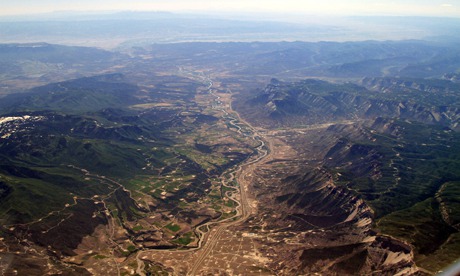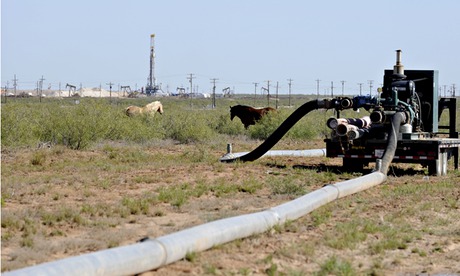http://www.independent.ie/business/irish/uks-nebula-gets-licence-to-explore-irish-sea-fracking-30012998.html
EPA to investigate whether State should also permit practice
Nick Webb – 16 February 2014
While ‘fracking’ may not be permitted in Ireland, UK-based Nebula Resources is planning a venture to look for shale gas in the Irish Sea.
A company run by one of the founders of controversial British fracking company Cuadrilla has been granted three licences to explore the possibility of carrying out hydraulic fracturing for shale gas in the Irish Sea, according to the UK’s Department of Energy and Climate Change. The licences cover areas directly across the Irish Sea, less than 100 miles from Dundalk.
Nebula Resources boss Dr Chris Cornelius believes there are huge volumes of offshore shale gas that could be drilled. If successful, it would be the first such project in the world. The company hopes to begin exploration shortly.
“Certainly offshore shale gas is a new concept, and there’s no reason with the UK’s history of offshore development that we can’t develop these resources offshore,” he said last week.
Shale gas is extracted using the controversial technique of hydraulic fracturing, or fracking, which involves forcing water, sand and chemicals under extremely high pressure into rocks, to break them up and release the natural gas trapped inside. Fracking has completely transformed the US energy market by producing huge amounts of gas and oil, which has improved the country’s energy security and reduced its dependence on Gulf oil.
Some environmentalists believe that fracking may damage water supplies, and seek to block the extraction of new fossil fuel resources. However, drilling offshore removes the need to deal with local communities.
Natural Resources Minister Pat Rabbitte has charged the Environmental Protection Agency (EPA) with investigating whether fracking should be permitted in Ireland.
The EPA has launched tenders for a two-year study into the impact of hydraulic fracturing.
The study is more comprehensive than first planned because of the level of opposition to fracking. Some 1,356 submissions were received following a public consultation period, the majority of which were against fracking. The EPA has now included a health expert on the committee drawing up the terms of reference for the study.
Most of the onshore fracking prospects focus on a small area bordering north Leitrim and south Fermanagh, which have been identified as potentially containing billions of cubic feet of natural gas. It is likely that this gas prospect may be extracted only by fracking.
The research programme is expected to start this summer. The Government has promised fracking will not go ahead while the research programme is under way. It is likely to be late 2016 or early 2017 before any fracking takes place in Ireland – assuming that the process gets a green light.
Cuadrilla Resources is the most high-profile gas fracking company operating in the UK. It is run by Irish exploration veteran Francis Egan and chaired by former BP boss Lord Browne.
Special thanks to Richard Charter


